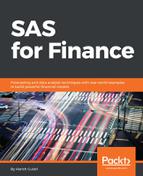There are many concepts to explain the effects of inflation. Rather than making a voluminous chapter on economics, let's look at one of them: the Phillips curve. It is a concept that was developed by A.W.Phillips. The concept explains the stable and inverse relationship between inflation and unemployment. The reason for choosing this concept is because this was used by economists and governments for a very long time, starting in the 1960s and 1970s. Economists now tend to disagree with the concept or have developed variations of the concept to show why the Phillips curve may only work in the short run. Over time, the way the economy and the constituents react to inflation changes. Concepts to explain inflation also evolve.
In Figure 5.3, we can see the inverse relationship between inflation and unemployment. As inflation remains high, the unemployment rate is low. As inflation decreases, the unemployment rate increases. In the 1960s and 1970s, the governments and central banks started using the premise of this relationship to artificially manage the inflation level depending on whether they wanted the economy to expand or contract. It was a choice being made between acceptable inflation levels and the level of unemployment. On some occasions, the central banks were fixing inflation targets and devising fiscal policy stimulus measures to ensure that their stated equilibrium of inflation and unemployment rate was achieved. The Phillips curve formed the basis of their belief in tweaking fiscal stimulus limits.
The Phillips curve in its original form has lost significance as various examples have shown that the relationship between inflation and unemployment isn't inverse and there are, as some theories suggest, other factors at play:

